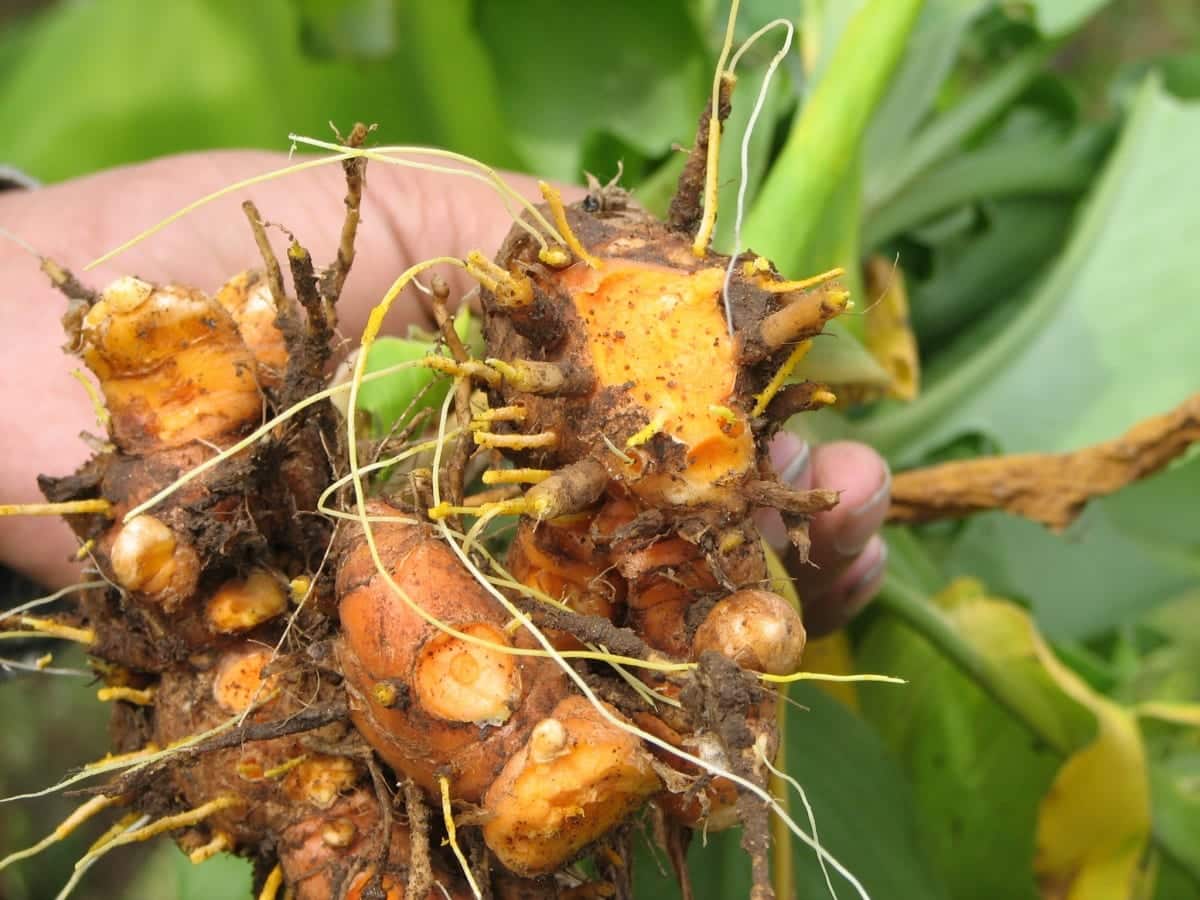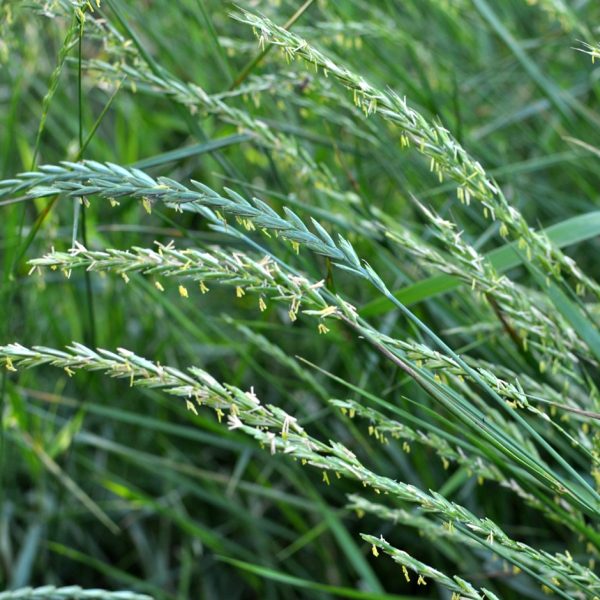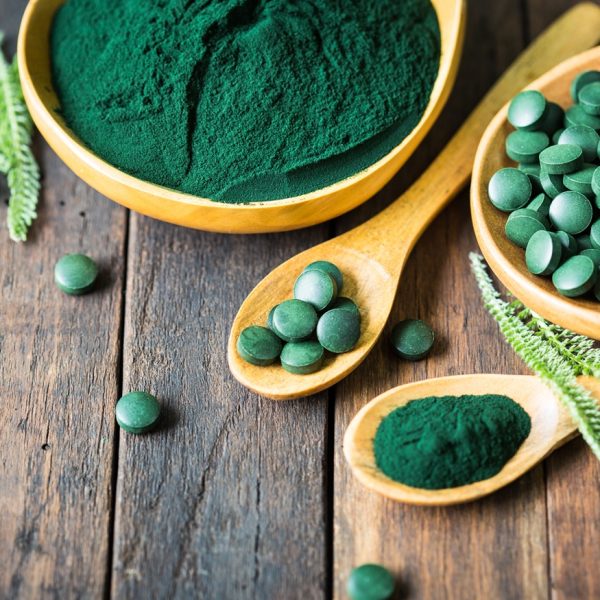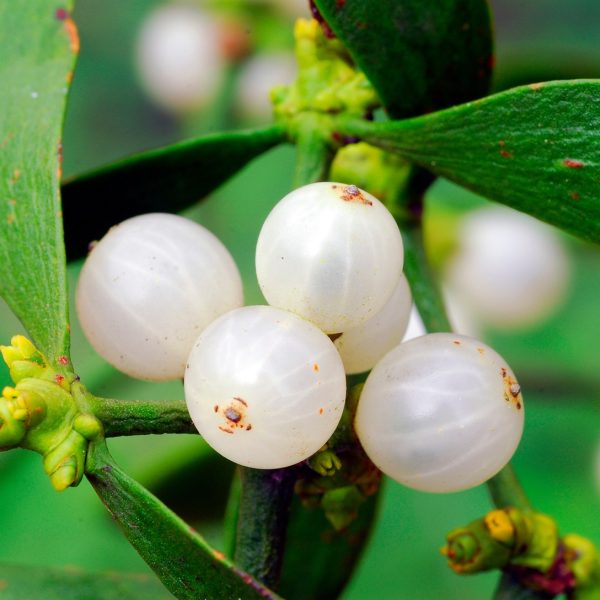In this article, we summarise the study, Effect of turmeric products on knee osteoarthritis: A systematic review and network meta-analysis (1).
Plant name and species
Turmeric (Curcuma longa)
Aim of study
Turmeric is well-researched for its effectiveness in treating knee osteoarthritis. Studies often test a wide variety of turmeric preparations and measure different outcomes. The present research uses a network meta-analysis (NMA) approach to compare the effects of different turmeric therapies in patients with knee osteoarthritis.
Study method

A systematic review was carried out to identify relevant papers. Several electronic bibliographic databases were used, and search terms included common and botanical names for turmeric. The population included adults with diagnosed primary knee osteoarthritis. The intervention was turmeric compared to placebo or standard treatment. Outcomes of interest were improvement in joint function, pain or stiffness. Outcomes were measured using WOMAC or VAS, with the former being Western Ontario and McMaster Universities Osteoarthritis Index and the latter a Visual Analog Scale for pain.
Study selection and data extraction were carried out by two reviewers. There were no restrictions on the searches by date or language. The authors used the Cochrane Risk of Bias tool which looks for details like randomisation, allocation concealment to determine potential bias within studies. They used GRADE to rate the overall certainty of evidence.
The NMA approach provides a comparison of all available interventions and gives a ranking of their effectiveness. This was done by pooling the data from all of the studies and applying statistical tests to give an indirect result (2).
Herbal preparation
For analysing the results, the authors grouped turmeric interventions based on their characteristics. These were:
- CT: Curcuminoid extractions
- BE: Preparations with additives or nanoparticles to enhance bioavailability
- PLS: Polysaccharide-rich preparations
These were compared to active comparison drug (AC) or a placebo (P).
Sample size
Seventeen randomised controlled studies on turmeric were included in the review, and most used commercially available products. One study compared two doses giving a total of 18 analyses.
Results of study

In all, 17 randomised controlled studies were analysed. The risk of bias was low risk (six studies), some concern (seven studies) and high risk of bias (four studies).
Nine studies compared turmeric to placebo and eight compared turmeric to standard drugs including diclofenac, ibuprofen and acetaminophen. For the types of turmeric preparation used in the 18 analyses, these were bioavailability enhanced products (BE, n = 12), curcuminoid extracts (CT, n=4) and polysaccharide preparations (PLS, n=2).
Meta analyses of intervention versus placebo
A two-way meta-analysis was produced from the data. For WOMAC pain, seven studies (n=913) showed that BE significantly reduced pain compared to a placebo with a pooled mean difference of −2.47 (–3.25, −1.68). For WOMAC function, BE statistically significantly improved this outcome compared to placebo. For WOMAC stiffness, none of the interventions significantly improved outcomes versus placebo.
For pain determined using VAS, both BE and PLS significantly improved pain scores compared to placebo.
Network meta-analyses
Network analyses were prepared for the same WOMAC and VAS outcomes as above, and Figure 2 in the paper nicely illustrates how multiple interventions can be visualised at once. The figure shows the comparisons of the interventions to AC — standard treatment, or P — placebo. The thick lines reflect the larger numbers of randomised controlled trials which have been carried out for the BE intervention group.
WOMAC pain
For this measure of pain, seven studies were analysed and all interventions significantly reduced WOMAC pain compared to placebo, with no single intervention being significantly better than the other.
By ranking the results, the effectiveness of the interventions was CT + AC > AC > CT > BE > P. Figure 3 presents these results, for example the largest effect due to CT + AC compared to placebo, with a mean difference of −4.01 (−6.22, −1.80).
WOMAC function
Similar to WOMAC pain, all interventions significantly improved function compared to the placebo, with no single intervention being statistically significantly better than the other. The ranking was the same as above: CT + AC > AC > CT > BE > P.
WOMAC stiffness
None of the interventions significantly improved stiffness compared to placebo.
VAS pain
For pain measured using a VAS scale, all interventions significantly improved VAS versus placebo. This time, two interventions were statistically significantly more effective – both BE + AC and CT + AC were more effective than either AC or BE alone.
Safety
The PLS group produced the highest percentage of adverse events which were mostly reported as miscellaneous. The BE preparation reported the highest incidence of gastrointestinal symptoms overall, around 6% of patients.
Other data
The authors presented other data to validate the network analysis including transitivity, which reflects variation in study characteristics that could include things like disease severity, baseline characteristics of patients, or how interventions were administered. The study did find that for baseline pain scores, there were differences between the groups.
Discussion

A network meta-analysis approach is ideal for herbal research where often a range of preparations exist, which is certainly the case for turmeric. The authors identified studies and categorised turmeric according to three main methods of preparation.
Starting with a standard meta-analysis, this indicated that BE significantly improved WOMAC pain and function, but not joint stiffness, compared to placebos. For VAS pain scores, both BE and PLS were the most effective treatments compared to placebos. The meta-analysis compares interventions to controls but not against each other. This suggests that the BE (bioavailability-enhanced) preparations are the most effective in improving osteoarthritis symptoms of pain and joint function, as indicated by different pain score scales.
The authors carried out a networked approach to rank the treatments against each other. This provides indirect evidence from which to draw further conclusions. The ranking showed that the combination of curcuminoid extract and active comparator treatment (CT+AC) were the most effective in improving WOMAC pain and WOMAC function compared to other interventions. For the VAS pain scores, the CT+AC and BE+AC groups were the most effective. These results suggest that turmeric products could be a useful adjunct treatment alongside standard therapies, including diclofenac, ibuprofen and acetaminophen.
Turmeric’s active compounds, including curcuminoids and alpha-turmerone essential oils, are recognised for their anti-inflammatory qualities and ability to inhibit cytokines thereby attenuating pro-inflammatory pathways. Many of the papers analysed used preparations of turmeric designed to enhance absorption. However, research also suggests that turmeric may have important biological effects through altering the gut microbiota. In one such study, the influence on gut microbiota composition was comparable between whole turmeric rhizome and curcumin in tablet form (3). As the relationship between imbalances in the microbiota, chronic inflammation and immune dysfunction have been established (4), future research could investigate the intricacies of turmeric’s potential as an anti-inflammatory treatment through its impact on gut microbiota composition.
Conclusion
Preparations of turmeric that enhance the bioavailability of curcumin were effective in reducing pain and improving function in patients with osteoarthritis of the knee, compared to a placebo. The network analysis suggested that combining a turmeric product with an active standard drug could also be useful in reducing pain and providing functional improvements to patients. The review also showed that turmeric was safe to use.
Overall the systematic review was carried out to a high standard. The combination of meta-analysis and networked approach provides a richer insight into the benefits offered by turmeric as a treatment for osteoarthritis.
References
- Wai HS, Pathomwichaiwat T, Suansanae T, Nathisuwan S, Rattanavipanon W. Effect of turmeric products on knee osteoarthritis: a systematic review and network meta-analysis. BMC Complement Med Ther. 2025 Jul 29;25(1):292. https://doi.org/10.1186/s12906-025-05045-z
- Chaimani A, Caldwell DM, Li T, Higgins, JP, Salanti G. Undertaking network meta‐analyses. 2019. Cochrane handbook for systematic reviews of interventions, 285-320. Available: https://www.cochrane.org/authors/handbooks-and-manuals/handbook/current/chapter-11
- Peterson CT, Vaughn AR, Sharma V, Chopra D, Mills PJ, Peterson SN, Sivamani RK. Effects of Turmeric and Curcumin Dietary Supplementation on Human Gut Microbiota: A Double-Blind, Randomized, Placebo-Controlled Pilot Study. J Evid Based Integr Med. 2018 Jan-Dec;23:2515690X18790725. https://doi.org/10.1177/2515690X18790725
- Bolte, Laura A., et al. “Long-term dietary patterns are associated with pro-inflammatory and anti-inflammatory features of the gut microbiome.” Gut 70.7 (2021): 1287-1298. Available: https://gut.bmj.com/content/70/7/1287





























